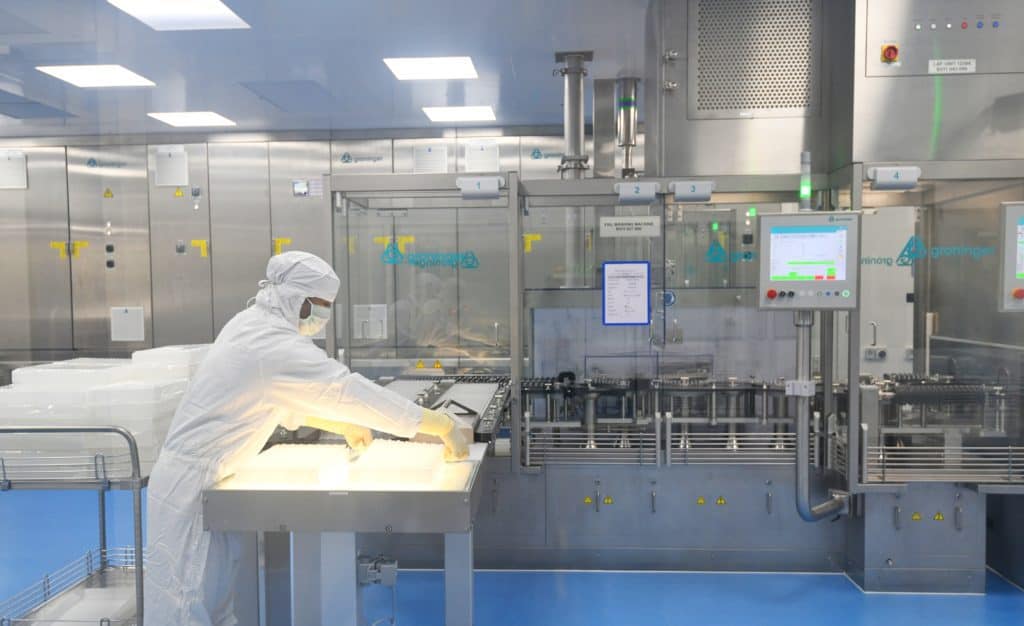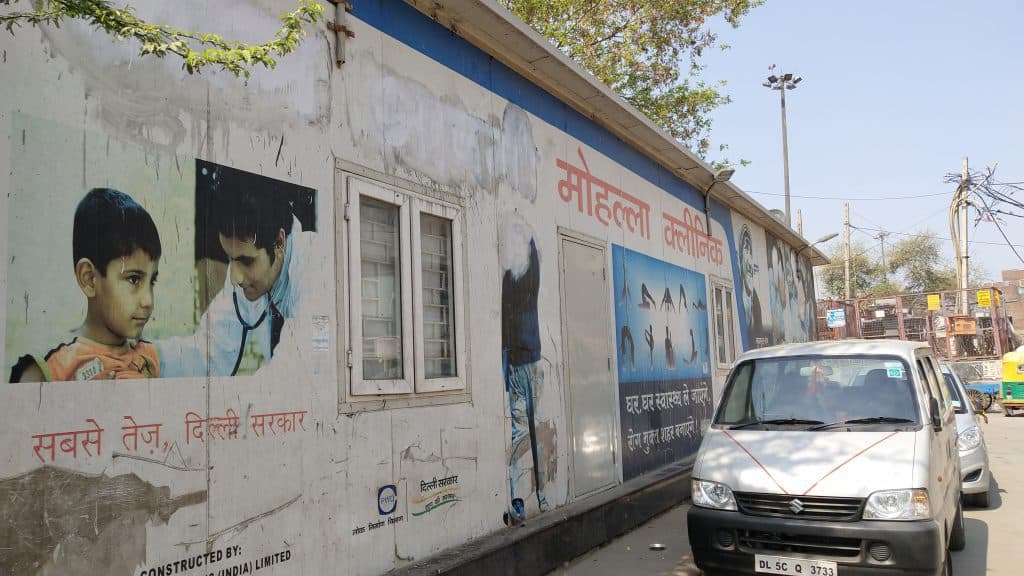“I am a great believer in the efficacy of the neighbourhood family doctor concept, somewhat in the manner it existed in my parents’ time,” says Kanuru Sujatha Rao, a 1974 batch IAS officer of AP cadre and former Secretary, Union Ministry of Health and Family Welfare.
Having spent 20 of her 36 years of government service in the health sector in different capacities at the state and federal levels, Sujatha Rao has extensive experience and expertise on India’s public health issues.
Among the many key positions she has held, Sujatha Rao was chairperson of the Portfolio Committee of the Global Fund for HIV/AIDS, TB and Malaria (GFATM). She was also member of the Global Advisory Panel of the Bill & Melinda Gates Foundation and a founding member of the Public Health Foundation of India.
Other senior positions she held were as member of the Advisory Board of the Ministerial Leadership Program at the Harvard School of Public Health and member of the High Level Panel on Global Risk Framework of the National Academy of Sciences, USA besides serving on the boards of UNAIDS and Global Fund for HIV, TB and Malaria.
Currently, Sujatha Rao is member of the National Health Systems Resource Centre under the Union Government.
An MA from Delhi University and MPA from Harvard University, Sujatha was a Takemi Fellow at the Harvard School of Public Health during 2001-2002. She also authored a book titled “DO We Care? India’s Health System”, published by Oxford University Press.
In an email interview with Citizen Matters, Sujatha Rao spoke on a range of public health issues, the problems and the way forward. On the slow pace of COVID vaccination, Sujatha was outspoken. “Our ability to scale up vaccinations was never in doubt,” she says. “It was and is the supply. And we clearly bungled there”.
Excerpts from the interview:
When Ayushman Bharat was launched, it was said that all Primary Healthcare Centres would be upgraded to Health and Wellness Centres. Yet, our ground observations during COVID reflect an entirely different reality — a total collapse of decentralised public health infrastructure. Why have we not been able to upgrade our primary health infrastructure even in cities?
The need to build a public health infrastructure for delivering primary health care services in urban areas, as in rural areas, was considered in 2005, under the National Rural Health Mission (NRHM) design itself. However, given the acute needs of rural areas and in order to get greater clarity on the type of architecture to be established in urban areas, the ‘approach and scheme’ was firmed up for additional funding only around 2010. By then, the economic situation was becoming difficult and it was agreed to take it up under the 12th Five Year Plan starting in 2012.
The 12th Plan changed the name of NRHM to National Health Mission (NHM) and included urban primary health care. Since then efforts have been made to establish primary care delivery systems in urban areas, but not systematically. Delhi attracted the maximum eye balls with its Mohalla Clinics. Their efforts were however stymied with the politics of the day. I am told they are no longer doing as well as when they were initially set up. But the model and concept of Mohalla clinics have great positives and are the way forward.
Read more: Delhi Report Card 5: How healthcare in Delhi has changed during the AAP tenure
Ayushman Bharat, launched in 2018, on the other hand, did not necessarily focus on urban centers, but sought to upgrade 23,000 and odd Primary Health Centers and the 1.5 lakh sub-centers established in rural areas for every 5000 population, into Health and Wellness Clinics across the country. Much has been done in improving the physical infrastructure and availability of drugs and trained personnel.
Twelve services have been guaranteed for delivery through these clinics. Half of them are already being delivered and their delivery systems might have been considerably improved with the overall strengthening of the H&W clinics scheme.
The most significant additions have been the diagnosis and delivery of drugs for diabetes and hypertension. But there are still some other services that need to be undertaken, such as mental health. It is a process and there is still a long way to go. Both time and doubling of resources for money and personnel are needed to realize the programme objectives as envisaged. And urban areas will continue to be a weak link in this as primary health centres barely exist uniformly all over.
The shortage of skilled medical and paramedical staff at all levels in urban primary healthcare centres — what would you attribute that to? How can the situation be improved?
Urban areas have twice the number of doctors, nurses and other paramedical staff as compared to rural areas. Again, in urban areas, the private sector employs twice the number of personnel than the government. The third level of inequity is that a majority of trained personnel in urban areas work in hospital settings. As mentioned, the government has not uniformly and systematically developed the primary health service delivery infrastructure in urban areas. The gaps are largely filled by untrained persons.
It is critical that in all urban areas, a close mapping of the health facilities is undertaken and facilities registered as required under the Clinical Establishment Act of 2010, as locational and distributive factors are critical for ensuring access. Such mapping will help ensure a trained care provider closest to the people. The government will also need to enforce a strong referral system as most of our tertiary hospitals are wasting resources delivering services that can be handled at primary health centers or in secondary hospitals.
So the concept of shortage of personnel in urban areas needs to be understood in a more nuanced manner. Overall there is a shortage and there is admittedly a clear demand and supply problem. The solution is in producing more doctors trained to addressing our needs.
Read more: Op-ed: What India’s public health system needs to pass the COVID-19 acid test
What are your thoughts on the Pradhan Mantri Jan Aushadhi scheme? We dont see too many of these outlets in our cities…and even where these exist, promotion, awareness etc seem to be very low
The PMJA, started over a decade ago by establishing such centers in public hospital premises with drugs, largely generic, provided at half the rates, was a great success. In states like Rajasthan, the impact was quite extensive. Drugs are a major component of household expenditures. So if this issue of supplying free or very affordable good quality drugs can be ensured, it can have vast welfare outcomes.
The failure is purely because of the lack of political will and the lobbying of private pharmacists who stand to lose from this. Drug sales are a hugely profiteering business and so breaking that chain and enabling PMJA to flourish requires substantial political will and stringent governance.
Speaking of the latest move – the ‘digital’ health mission – how do you see, one, the need for and two, the relevance of digitised health records in our country, even considering the urban population alone? Could it solve any of the problems that have been plaguing our public healthcare systems?
Digitization addresses only three issues – for the patient it is convenient to have all the medical records captured and available in a digitized card that they can carry. For the doctor, it is convenient to have all the medical records in one place that can quickly been gone through to arrive at a better assessment of the patients’ condition and treatment. And finally having records digitized in a systematic manner can provide the much needed data for operational and clinical research required for better drug discovery, innovation in medical devices development etc. These are not insignificant or small positives.
But then they can also lend themselves to a lot of abuse if misused, not to mention the huge issues of breaching privacy. Besides, digitization requires a lot of investment by way of procuring the hardware, software, technical personnel, besides close monitoring and also atleast two hours of a doctors time in filling up all the data etc. For overworked doctors that’s a real stress.
Given the huge gaps in our public health delivery systems and the massive demand that is surging every day making it impossible to cope with the load, digitization and adding new systems of record keeping will add yet another pressure point that the system can ill afford.
So my answer is that this will not take off unless the overall supply side of service delivery is not improved. A card, even if digitized, cannot solve the problems of access and affordability. We need to keep our priorities in sight.
Read more: COVID-19 has put the spotlight on mental health, but India needs more
What has been the biggest stumbling block in ramping up COVID vaccinations in India?
Supply. India’s struggle to vaccinate all for COVID is due to the initial bungling in not having tied up the supply of vaccines. Government ought to have been aggressively proactive in funding research in vaccine discovery, ensured uninterrupted supply of inputs required and incentivizing indigenous manufacturers to manufacture some of the imported items. The government should have given firm orders for the vaccine manufacturer to step up production and supply.
Our ability to scale up vaccinations was never in doubt – we had and have the capacity and logistical infrastructure to do so. It was and is the supply. And we clearly bungled there.

Pic: Press Information of Bureau
If you were to suggest just one “most important” reform today, in the way urban healthcare is structured and delivered, what would that be?
I am a great believer in the efficacy of the neighbourhood family doctor concept, somewhat in the manner it existed in my parents time and exists now in UK. Infact, Nehru tried to introduce that with the CGHS innovation in early 1950s. But the pilot was unfortunately not refined and scaled up.
Under that scheme, we, as a family, had full access to a team of care providers, located less than a furlong away – doctors, nurses, laboratary technicians, dressers, pharmacists etc. who diagnosed, provided treatment, stabilised and referred. They also visited homes to look up the patient if required and undertook immunization programs and other such preventive activities.
We need such a public health architecture in all our urban cities. That requires vision and funding. It’s different from having insurance companies pay for outpatient visits to hospitals.
